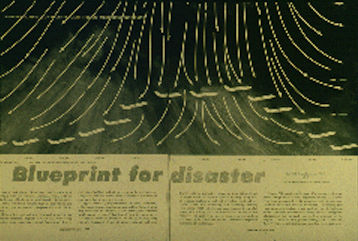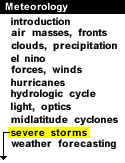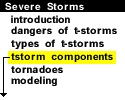
|
The anatomy of a microburst shows that the highest wind speeds occur shortly after the cold air has impinged upon the ground. The spin-up of the microburst curl then results in an acceleration of wind velocities about the curl.

An aircraft entering a microburst will encounter strong headwinds, followed by strong tailwinds, as it flies from one side of the microburst to the other. If the pilot compensates for the headwind (to decrease lift) a bit too much, then the aircraft will lose lift in the tailwind and quickly strike the ground.
 |
The end of microburst danger comes minutes after the air
reaches ground, but other microbursts will follow in many cases,
similar to repeated tornado events with a
cyclic supercell. It was
determined that one airliner crashed after it encountered
three microbursts in rapid succession upon final approach.
Microbursts will occur with a plethora of thunderstorm types, even dissipating anvil clouds in some cases. The important message is that some thunderstorms or even weak convective showers which were regarded as harmless a few years ago are now recognized to be potential killers. |

introduction |
|

developing rain shaft |






